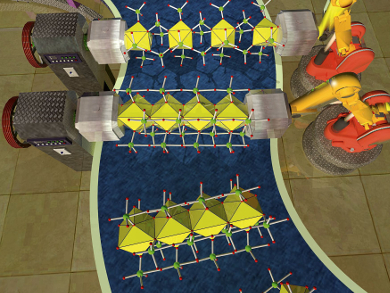Thorium, the most abundant of the actinides in the Earth’s crust, is relatively stable as ThIV. It is therefore often used as a surrogate for studying the structural chemistry of other tetravalent actinide elements, such as PuIV and NpIV. Molybdenum is an important fission product of nuclear fuels, actinide molybdates may form in geological repositories of spent nuclear fuel.
Evgeny Alekseev and colleagues, Institute of Energy and Climate Research, Jülich, Germany, have reported an experimental and theoretical study of ThMo2O8, the simplest of the thorium molybdates. Compounds belonging to the AM2O8 family (A = Hf, Zr Th; M = Mo, W) are known to exhibit diverse structures depending on pressure, temperature, and hydration.
At high temperature and 3.5 GPa pressure, ThMo2O8 is shown to undergo a dramatic reduction in volume, contracting by 20 % along the c axis, forming an unusual orthorhombic polymorph, which remains kinetically stable under ambient conditions. Unprecedentedly, the Th and Mo polyhedra are linked in a face- or corner-sharing manner, forming dense chains of Th or Mo, unlike the known ambient-pressure polymorphs, in which the polyhedra are isolated from each other.
- Giant Volume Change and Topological Gaps in Temperature- and Pressure-Induced Phase Transitions: Experimental and Computational Study of ThMo2O8,
Bin Xiao, Philip Kegler, Thorsten M. Gesing, Lars Robben, Ariadna Blanca-Romero, Piotr M. Kowalski, Yan Li, Vladislav Klepov, Dirk Bosbach, Evgeny V. Alekseev,
Chem. Eur. J. 2015.
DOI: 10.1002/chem.201503839




